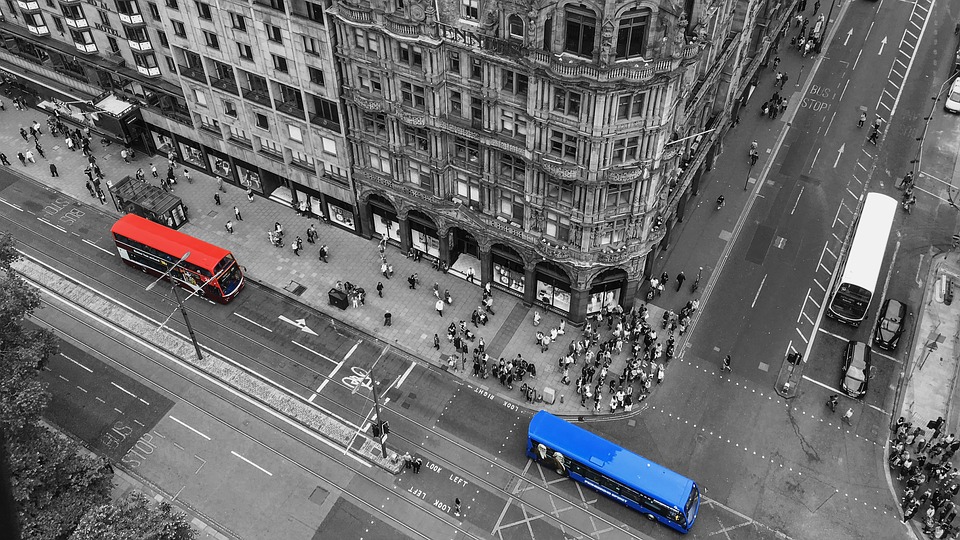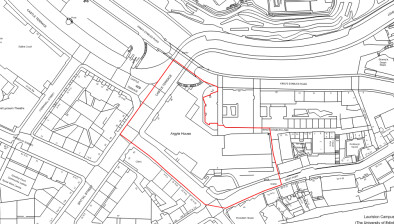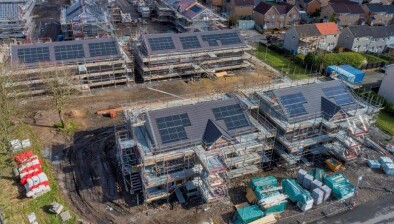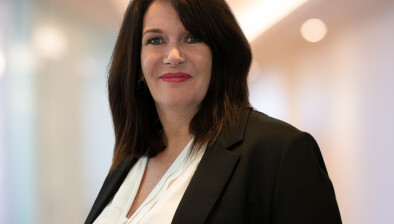Cockburn Association: Edinburgh – The Connected City
Edinburgh heritage body the Cockburn Association has launched a series of thought-pieces under the heading Our Unique City: Our Past, Our City, Our Future to generate a civic conversation that looks to address the many challenges facing the capital now and in the immediate future.
Paper Three – The Connected City – ponders transport and digital platforms, considering how the city functions in an age of disruptive technologies and digital/AI innovations

Background
A key characteristic of a successful city is its connectivity both within itself and with its surroundings –physically, as in movement and transport systems, and increasingly, also in virtual networks. Connectivity enables access, facilitating social, cultural and business interactions which make it prosperous and a good place to live.
Although there is widespread awareness of connectivity issues in Edinburgh, it tends to be fragmented, with vociferous lobbying groups –for instance, cyclists, private motorists, traffic engineers, pedestrians, business organisations –all pressing their own specific agendas with limited regard for the overall picture. Thus, one person’s transport usage becomes someone else’s congestion or air quality issue. Currently initiatives are fragmented and tend to represent the best funded and most vocal lobbies rather than actual need. City planning needs to redefine itself from its present reactive regulatory administrative role responding to the latest petitioning faction, into an enlightened agency which initiates and coordinates all the strands of connectivity into a coherent inclusive and positive approach and which delivers practical outcomes.
Connectivity is not a transport issue, or at least one solely. In a digital age with break-through technologies in Artificial Intelligence happening on an almost daily basis, technological connectivity will become the most important factors for a successful city. In benchmark surveys about what is important to households, 25 years ago a telephone was seen as a critical requirement for modern living. Today it is high-speed access to the internet. However, digital expansion presents new challenges for city planning. The impact of AirBnB is highlighted elsewhere but there can be no denying the market impact it has had. Local Development Plans prepared on 10-year cycles are proposed by the Planning Bill in front of the Scottish Parliament will not be capable to addressing issues as they emerge. A more nimble, tech-savvy approach to planning and city management will be required.
Reducing Traffic Volumes
Edinburgh has the second highest traffic volumes (in average vehicle-miles per day) in Scotland after Glasgow, and this is still steadily increasing. Most other measures suggested in this work stream will be rendered less effective unless there is a concomitant reduction in the numbers of vehicles on the road. At the same time, essential travel, delivery servicing and public transport must remain. The key element is therefore to discourage traffic which has no need to be within the city.
High parking charges have not proved to be a deterrent but perhaps these should be extended to cover all parking including in the workplace, retail and leisure facilities, and perhaps even the private house in the suburbs, using revenue to pay for sustainable and active travel investments. Edinburgh’s original Congestion Charging proposal still has negative associations in some quarters, but as with the tram this should not prevent re-examination of a new scheme which positively addresses and resolves the previous flaws. This approach can be supported by local measures to achieve low traffic neighbourhoods within residential areas. Should price regulation of road space be considered? Are there more creative approaches for cross-funding of transport infrastructure?
The Walking City
All journeys end on foot. We are all ultimately pedestrians once we have left our bus or tram, parked our car or bike. Walking is the main mode of travel for over a third of Edinburgh residents-the highest percentage in Scotland. Pedestrian measures must be disaggregated from and become the primary element of “active travel” programmes, which currently have an undue bias towards cycling provision out of all proportion to actual or potential usage. The needs of both are different and not always compatible (eg ‘shared’ surfaces).
The first imperative must therefore be the principle of the well-designed walking city, where pedestrians have priority, are safe from risks, and feel comfortable. Considerable work was done by Jan Gehl and others on creating a quality pedestrian environment, but this does not seem to have been translated in practical action. It will not necessarily require full pedestrianisation of streets in most instances apart from pavement widenings, but it will require robust enforcement of existing measures such as the 20mph zones, freeing pavements from parked vehicles, illegal cycling and encroaching signage and café tables, and more focus on street design, public spaces, design and maintenance on paving, decluttering, litter clearing, regulating road works and addressing the precedence of pedestrian flows at junctions (eg zebra crossings, countdown timers). Currently these activities are undertaken by a range of unconnected agencies for whom, in many cases, it is not their main priority. How can we deliver a city best experienced on foot? What initiatives are needed?
Integrated Public Transport
Edinburgh is often cited as having an exceptionally good public transport system, and in comparison with other British cities this is true –there is a higher percentage of bus usage than any other Scottish city. However, there are still problems of peak-hour congestion and delays and the lack of interchangeability between different modes and even between different routes. This leads to longer waiting time for bus users (because they cannot transfer) and more and emptier buses plying the streets, and encourages car usage if there is no single route to a particular destination.
Transfer ticketing would give better choice, faster journeys, reduce bus movements and permit a simplification of the extremely complex route structure. Other issues include siting and design of bus stops.
The Edinburgh tramway has understandably been the centre of considerable public interest. However, in considering the proposed extension it is necessary to distinguish between the management failings in cost control and delivery of the original contract, and the positive current benefits of higher-than-predicted ridership, the pollution-free technology, and the fact that Leith has a higher population than many rail-connected Scottish towns such as Linlithgow. An extension could therefore be beneficial providing its construction is managed properly and its design maximises the advantages of the tram – eg a continuous non-shared reservation (as per York Place) for the whole length of Leith Walk. What inter-urban systems are required to support greater use of public transport? What policy initiatives are required to improve the current system?
Air Pollution
Poor air quality is recognised as a health hazard, and transport has been identified as a major contributor, especially for nitrous oxides and particulate matter. Edinburgh is proposing Low Emission Zones in line with the Scottish Government’s aspirations, although if these are to be anything more than sloganising they will need to be backed by identifying serious practical measures and how they might be enforced.
Reducing traffic volumes would immediately help, although it is worth noting that transport contributes only 39% of NOx emissions, so a complete programme must look at other sources of pollution also. In Edinburgh, a significant factor will be from the construction machinery and processes in the continuous redevelopment of the city’s buildings and infrastructure.
The worst offenders tend to be diesel engines. However, generalised approaches based on fuel type or engine displacement do not acknowledged the more nuanced issues involved. Older vehicles emit greater pollutants as do HGV and LGV vehicles as well as diesel buses. Replacement by alternative fuels should be a major objective. It should be relatively easy because many of these vehicles –buses, taxis, couriers, deliveries –have semi-fixed runs within the city and return to base for recharging.
There remains the thorny issue of a residential city centre, where many homeowners also are car owners. Should policies promote anti-car use, or anti-car ownership?
A major objective will be to move away from carbon-based energy supplies. However, caution needs to be exercised in promoting electric cars. A straight one-for-one replacement will do nothing for congestion, for road safety, for promoting active travel and health or freeing up urban space, and charging points will add to rather than reduce kerbside clutter. Hybrid cars are even more doubtful, as when the batteries start to fail they tend to revert exclusively to petrol driven mode. A proper study of all sources of air pollution needs to be undertaken to decide on the best overall solutions. Does a simple fuel type shift hold the answer to traffic pollution? What infrastructure is needed to support a shift away from carbon-based fuels?
Virtual City
In addition to physical movement, connectivity also embraces remote interaction, from the nineteenth-century electric telegraph and telephones to present-day technology. Edinburgh is well equipped with good internet services, and it is important that it continues to stay abreast of technological upgrades. Even with wireless expertise, considerable intervention and adaptation –cables, transmitters, masts, sensors, control equipment –must be threaded through the historic streets and buildings in a way which does not undermine the inherent quality and cultural heritage. What scope is there for greater synergy with utility grids and other networks in adopting consistent standards for data exchange to mutual benefit?
Smart City
A “Smart City” is a designation many cities aspire to. Stripped of the hype, it essentially focuses on using its networks of information and communication technology (ICT) to collect data on activities and functions, and exploiting that knowledge to make intelligent management decisions, act efficiently, resolve problems, and make best use of resources to achieve sustainable economic development and a high quality of life. Smart cities therefore have a strong measure of innovation combined with active governance and robust leadership to recognise and make use of it.
Edinburgh already has the first of these characteristics, but so far has demonstrated rather less of the second. Surprisingly, the city makes very little use of the considerable knowledge base on these issues within the four universities. For example, it is ironic that, although talks of energy-saving combined-heat-and-power systems have been discussed by the Council for decades, only the University has actually delivered a successful private network which they are now extending. Municipal / academic partnerships would be beneficial to both sides.
In the transport field, there are already some innovations such as bus tracking and parking-by-phone. There are many other opportunities, such as intelligent waste bins to raise the standards of cleanliness (and therefore environmental quality) of streets; for identifying and repairing potholes and road faults; for better management of temporary diversions; and many other applications. How can Edinburgh link Smart City opportunities to land management and city planning approaches?
Citizens’ City
Central to all of this is ensuring strong citizen support and participation. Edinburgh has an articulate and informed population who take a keen interest in their city (48% of adults have a university-level qualification) and it is necessary for the local authority to realise that these too are ‘stakeholders’, and not just confine their consultations to business and financial originations. A strong partnership approach with resident and community engagement will enable the benefits of a ‘smart’ city to permeate through the populace and, particularly with its emphasis on sustainability and energy use, address issues such as fuel poverty and life quality. In a modern city, do we need better, faster and more integrated processes for city governance?
To access the full report, click here.









